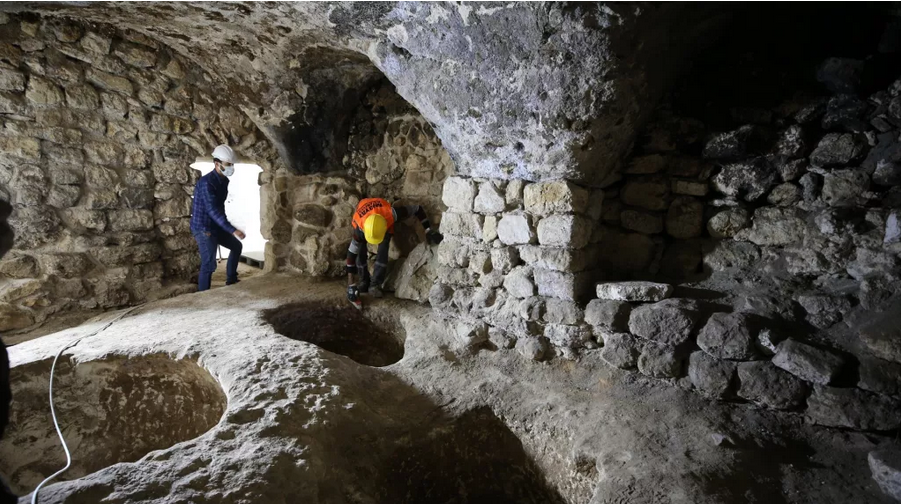Archaeologists in southeastern Turkey have unearthed a vast underground city that was built almost 2,000 years ago and could have been home to up to 70,000 people. The subterranean complex may have been a space that early Christians used to escape Roman persecution.
 The first underground chambers of the ancient complex were found about two years ago, during a project to clean and conserve historical streets and houses. Workers on the project first discovered a limestone cave, and then a passage into the rest of the hidden city.
The first underground chambers of the ancient complex were found about two years ago, during a project to clean and conserve historical streets and houses. Workers on the project first discovered a limestone cave, and then a passage into the rest of the hidden city.
49 chambers have been unearthed in the colossal complex, as well as connecting passages, water wells, grain storage silos, the rooms of homes, and places of worship, including a Christian church and a large hall with a Star of David symbol on the wall, which appears to be a Jewish synagogue.
Artifacts found in the caverns — including Roman-era coins and oil lamps — indicate that the subterranean complex was built sometime in the second or third centuries A.D.
 Less than 5% of the underground city, now known as Matiate, has been explored so far. The entire complex may be larger than 4 million square feet in area and would have been large enough to accommodate between 60,000 and 70,000 people.
Less than 5% of the underground city, now known as Matiate, has been explored so far. The entire complex may be larger than 4 million square feet in area and would have been large enough to accommodate between 60,000 and 70,000 people.
Christianity was not an official religion in the second century and families and groups who accepted Christianity often took shelter in underground cities to escape the persecution of Rome.
In 313 A.D. Emperor Constantine issued the Edict of Milan, making Christianity legal and ending the persecutions. Then in 380 the Emperor Theodosius issued an edict making it the official religion of the Roman Empire.
The ancient city of Midyat above the subterranean complex was likely first built by the Hurrians, a people who occupied parts of central and southern Anatolia (in present-day Turkey) up to 4,000 years ago, during the Bronze Age.
 The tradition of building homes and cities underground is well established in Turkey. More than 40 ancient subterranean cities have been found there, including Derinkuyu — an enormous complex in the central Cappadocia region that was burrowed into soft volcanic rock, possibly by the Anatolian people known as the Phrygians in the eighth and ninth centuries B.C.
The tradition of building homes and cities underground is well established in Turkey. More than 40 ancient subterranean cities have been found there, including Derinkuyu — an enormous complex in the central Cappadocia region that was burrowed into soft volcanic rock, possibly by the Anatolian people known as the Phrygians in the eighth and ninth centuries B.C.
Some go down more than 10 levels and have space for tens of thousands of people, like upside-down castles.
You can read the original article at www.livescience.com
